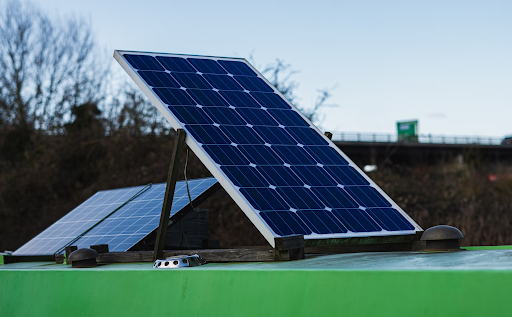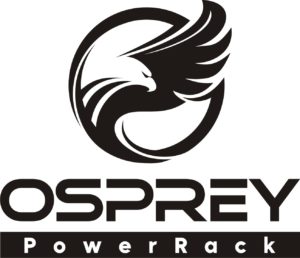Best Ground-Mount Solar Options For Temporary Installations
Key Takeaways
- Using earth anchors instead of concrete foundations significantly reduces installation costs and eliminates the need for heavy machinery.
- These systems are ideal for various scenarios, including disaster relief, military operations, construction sites, and remote medical clinics
- Temporary installations should minimize soil disturbance and environmental impact.
- Osprey PowerRack™ provides the best solution for those looking to temporarily install a ground-mount solar system.
Best Ground-Mount Solar Options For Temporary Installations
1. Ground Screws
Ground screws are steel posts that are driven into the ground to provide a sturdy and reliable foundation for solar panels. They are easy to install and can be removed with minimal disruption to the surrounding area.
This option is useful for locations where traditional concrete footings are impractical, such as in soft or sandy soils. Ground screws are reusable so they’re a good choice for temporary setups.
2. Ballasted Racking Systems
Ballasted racking systems use heavy weights, such as concrete blocks, to secure solar panels without the need for permanent ground penetration.
This type of mounting is suitable for temporary installations on rooftops or flat surfaces where drilling is not an option.
3. Pile-Driven Mounting Systems
While usually used for more permanent setups, pile-driven systems can still be considered for temporary installations if needed for longer durations.
Steel or aluminum piles are driven into the ground to provide a sturdy mount that can be easily dismantled.
Although they involve ground penetration, they are more sustainable than concrete foundations for short-term use.
4. Hybrid Ground-Mount Systems
Hybrid racking combines the benefits of both ballasted and anchored systems. These systems use minimal ground penetration while also using ballast for extra stability.
They are versatile and suitable for temporary installations in various terrains to provide a balance of stability and easy disassembly.
5. Earth Anchor Solar Mounts
Earth anchor systems, as used by our Osprey PowerRackTM, are excellent for temporary solar setups in diverse soil conditions.
They eliminate the need for concrete foundations and can be easily installed and removed. This system provides flexibility, speed of deployment, and cost savings, which makes it a go-to option for short-term projects.
| Nuance Energy is your superior solution for Ground-Mount solar. Our patented foundation technology, in the Osprey PowerRack™, allows for rapid installation using only handheld tools, significantly reducing both time and costs compared to traditional racking systems. This cutting-edge technology works for residential and commercial installations, and Nuance Energy empowers solar installers to take back control of their installation schedules, control project COGS, gain market share, increase the speed of installation, and reduce costs and labor. In contrast, a traditional ground-mount is much more unpredictable, slower, and costly.
Find out how Nuance Energy can accelerate your solar projects with the Osprey PowerRack™ line, and boost your profitability. Contact us today to discuss our innovative ground-mount solutions. |
Key Factors To Consider For Temporary Solar Installations

A non-penetrative solar racking is better for temporary installation.
- Installation and Removal Time: Systems that can be quickly deployed and dismantled, such as ballasted or Earth anchor systems, are ideal.
- Non-Penetrative Mounting Options: Temporary installations often occur in locations where digging or ground penetration is not allowed or feasible, such as landfills, leased land, or protected areas. Consider non-invasive mounting systems that can be installed without damaging the terrain.
- Mobility and Portability: Solar systems that are modular and can be easily moved to different locations are better suited for temporary installations.
- Cost and Budget: Choose systems that have low upfront costs and quick return on investment, as well as those that reduce the need for expensive geotechnical studies or permanent infrastructure.
- Environmental Impact: Temporary solar systems should have minimal environmental impact. Opt for systems that don’t require concrete foundations or major land disruption.
- Weather and Site Conditions: Temporary installations often face changing site conditions. So be sure to choose mounting systems that can withstand local weather conditions like wind, rain, or snow.
Use Cases For Temporary Ground-Mount Solar
- Disaster Relief Efforts: Temporary solar installations can provide essential power in disaster-struck areas where traditional electricity sources are compromised. They can quickly supply electricity for medical equipment, communication devices, and emergency shelters so that critical services remain operational during crises.
- Military Applications: Portable solar systems are used by military units to power forward operating bases and field camps. These reduce reliance on diesel generators, which can be logistically challenging and hazardous to resupply.
- Construction Sites: Temporary solar arrays can supply power to construction sites that lack access to the electrical grid. They can run tools, lights, and equipment so that work proceeds smoothly while reducing the carbon footprint of construction activities.
- Event Power Supply: Solar panels can be deployed at outdoor events such as music festivals or fairs to provide clean energy for lighting, sound systems, and food vendors.
- Remote Medical Clinics: Portable solar systems can power medical facilities in remote or underserved regions where grid access is limited.
- Temporary Network Augmentation: In areas experiencing temporary spikes in energy demand, such as during major events or construction projects, temporary ground-mounted solar installations can supplement existing power supplies. This approach helps stabilize the grid and reduce strain during peak usage times.
- Research Stations: Remote research facilities require reliable power sources for data collection and analysis. Temporary solar setups can provide energy for sensors, communication devices, and other equipment needed for environmental monitoring or scientific research.
Read More: Types of Ground-Mount Solar Systems
Why Use Osprey PowerRackTM For Temporary Ground-Mount Solar Installation

Osprey PowerRack™ is ideal for temporary as well as permanent ground-mount solar installation
Our Osprey PowerRack™ provides several compelling advantages for temporary solar installations:
- Rapid Installation: The Osprey PowerRack™ allows for an incredibly fast setup. A small crew of just three to four people can install a 10kW structure in about an hour using standard power tools. This efficiency is valuable in various scenarios, such as disaster relief or military applications.
“Traditional ground-mount systems often require multiple trips to the site and significant delays for things like concrete curing. With our system, that’s eliminated. We can install everything in one mobilization, which cuts down project time significantly.” – Nuance Energy
- Cost-Effective Foundation System: Using the earth anchor foundation technology, the Osprey PowerRack™ eliminates the need for costly foundations like pile-driven systems or concrete piers. It also minimizes site preparation requirements and removes the need for excavation, which makes it ideal even for areas with challenging soil conditions.
- No Heavy Machinery Required: The installation process does not necessitate heavy machinery, which can be a significant cost and logistical hurdle for temporary setups. Instead, only handheld tools are needed for solar installation.
- No Geotechnical Reports Needed: The Osprey PowerRack™ features real-time soil condition anchor load testing, which removes the requirement for expensive geotechnical reports. This simplifies the planning process and reduces costs associated with traditional installations.
- Versatile Applications: It is suitable for a wide range of applications, including agricultural solar setups, emergency preparedness, military operations, and community solar farms.
- Durability and Compliance: Engineered to withstand wind loads up to 140 mph and snow loads up to 60 psf, the Osprey PowerRack™ is built for resilience in diverse environmental conditions.
Frequently Asked Questions (FAQs)
How do temporary ground-mount systems work?
Temporary ground-mount systems function similarly to traditional solar installations. They use photovoltaic (PV) panels that convert sunlight into electricity.
The panels are mounted on a racking system anchored to the ground, which can be adjusted for optimal tilt and orientation to maximize sunlight exposure. The generated electricity can be used on-site or fed back into the grid.
Can temporary ground mounts be installed on uneven or rocky terrain?
Yes, many temporary ground-mount systems such as Osprey PowerRack™ are designed to be installed on uneven or rocky terrain.
Can temporary systems be moved easily?
Yes, they are designed to be easily dismantled and relocated to allow you to move them from one site to another with minimal effort. This flexibility makes them an attractive option for temporary projects or have changing energy needs.
What maintenance is required for temporary ground-mount solar systems?
- Regular cleaning of solar panels to remove dust and debris.
- Inspecting mounting structures for stability and integrity.
- Managing vegetation around the installation site to prevent shading.
What is Osprey PowerRack™?
The Osprey PowerRack™ is our patented ground-mount solar racking system for quick and efficient installation. It uses earth anchors instead of traditional concrete foundations to allow for flexibility and minimal environmental impact. The system is modular and scalable, which makes it suitable for various project sizes, including temporary installations.
Save Time & Money on Your Next Solar Project
Request a QuoteRECENT POSTS
- DPW Solar vs Nuance Energy Mounted Solar Options: Cost & Benefits
- Geotechnical Report Cost & Requirements For Solar Projects
- Are Solar Panels Worth It In Nevada? Costs & Options
- OSPREY PowerRack Ground Mount System Compatibility: Single- and Dual-Axis Trackers
- Rammed Earth Foundation For Solar Arrays: Cost, Pros & Cons
- Agrivoltaics Explained: Solar & Agriculture Combined
- Large Scale Solar Systems Options: Pros & Cons
- Best Solar Options For Farms & Agriculture: Cost, Pros & Cons
- Unirac vs MT Solar Mounted Options: Cost & Benefits
- IronRidge vs Grengy Mounted Solar Options: Cost & Benefits

